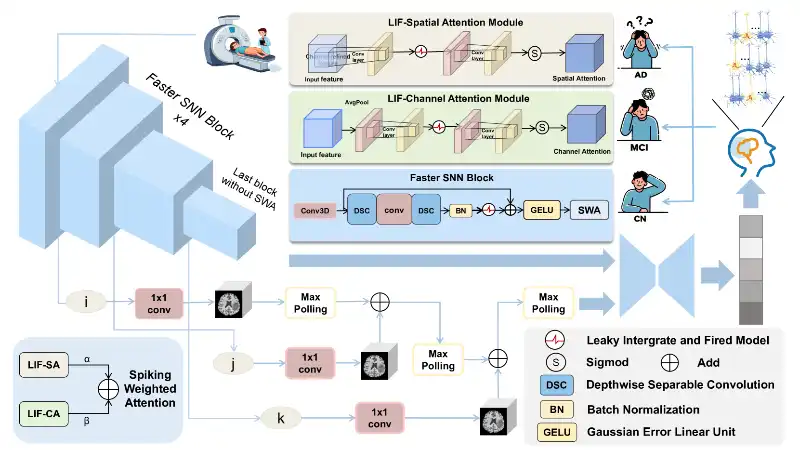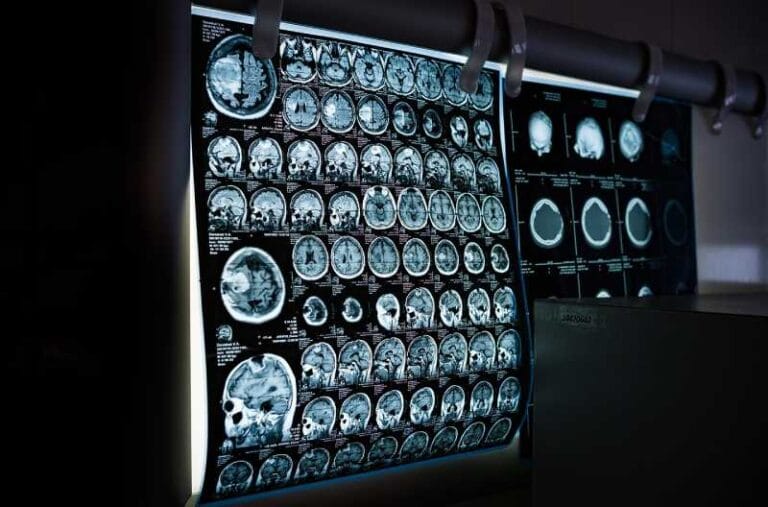AI Model Promises Revolution in Alzheimer’s Diagnosis

Diagnosing Alzheimer’s early, especially in the mild cognitive impairment (MCI) stage, can make all the difference to the quality of life of millions of people. But the task remains a major challenge: traditional cognitive tests are subjective, and more accurate tests, such as PET-CT, are expensive and inaccessible to a large part of the population. A new artificial intelligence (AI) model, however, could change this scenario.
Chinese researchers have proposed an innovative system called FasterSNN, which uses neural networks inspired by the functioning of the human brain to classify magnetic resonance imaging (MRI) images with high accuracy and low energy consumption.
Unlike conventional neural networks, FasterSNN is based on spiking neural networks (SNNs). These networks function similarly to biological neurons, activating only when the “membrane” potential reaches a certain threshold. The result? Drastic savings in computational energy and behavior closer to that of the human brain.
The core of the system consists of LIF (Leaky Integrate-and-Fire) neurons, which accumulate information over time, and multi-scale attention mechanisms, capable of focusing on the most relevant regions of brain images. Instead of relying on multiple types of exams, the model operates exclusively with MRI data, a cheaper and widely available alternative.
In tests conducted with the international ADNI and AIBL databases, FasterSNN achieved up to 89.4% accuracy in detecting Alzheimer’s, outperforming traditional networks such as ResNet and Transformer-based models. The model also showed extremely low energy consumption (only 1.15 joules) and reduced training time, crucial factors for applications in medical environments with limited resources.

In comparison, deep networks such as M3T, based on Transformers, consumed more than 2,700 joules and took five times longer to train, with lower accuracy. These data highlight energy efficiency as a competitive advantage of the model, without compromising diagnostic quality.
The accessibility of diagnostic tools is a bottleneck in regions with few resources or far from major medical centers. By allowing the use of devices with lower computational capacity and reducing the costs of exams, FasterSNN paves the way for broader and earlier screening of patients at risk for Alzheimer’s.
In addition, the model’s interpretable structure—that is, the ability to explain why it reached a certain conclusion—is an important advance in light of growing concerns about the “black box” nature of medical AI.
Despite the promising results, the authors acknowledge that the model still relies on a fixed temporal structure and uses only one type of data (MRI). The next step will be to incorporate multimodal information, such as blood tests and clinical data, in addition to allowing for a more dynamic temporal analysis—which could further increase diagnostic accuracy and clinical utility.
Reference: Wu, C., Chen, Y., Du, Y., et al. (2025). Toward practical diagnosis of Alzheimer’s disease: a lightweight and interpretable neural model. Available at: arXiv.org






